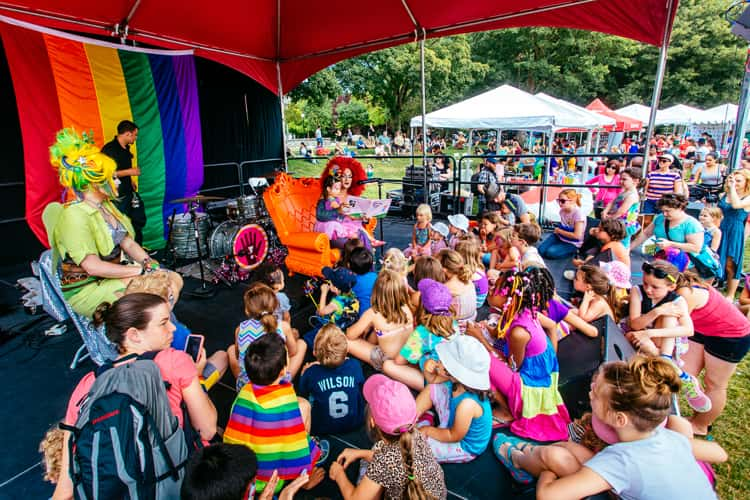Author: Evan Tribelhorn
Header: Photo by Adam Pulicicchio
Drag queens, children’s books, and public libraries are not things that regularly cross my mind in the same sentence, but once I learned about drag queen story hour I realized that these are things that should absolutely be put together. The basic premise of drag queen story hour is drag queens are invited to public libraries to read children’s books, often times about accepting people who are different in the way that they express themselves and self-love. These are all such important lessons for kids, and who better to teach them than a drag queen- someone who not only embodies all these traits, but does it in a fun and exciting way.
I wish I could say that I don’t know why programs like this haven’t made their way to libraries and bookstores before now, but I’m painfully aware of that answer. Homophobia has made drag into an art form that isn’t treated as an actual art form, and more importantly made drag something that is consigned to purely adult spaces. Even in adult spaces, drag is something that can only be accessed once you reach an age where you can legally purchase alcohol. This kind of gatekeeping and connotation with adult activities has made a large majority of the public think about drag as inherently explicit, when that could not be further from the truth. This isn’t to say that every drag queen should be in a library reading to children this instant, because it is true that some performers engage in more adult oriented performances, but that can be said for any type of art. Drag is for anyone of any age, however, many people having this connotation in mind have been quick to demonize these kind of events despite how beneficial they can be.

Drag can be useful as a learning tool for kids as they begin learning about the world and how self-expression manifests, especially how it relates to gender expression. Children aren’t born knowing that boys aren’t allowed to wear dresses and paint their nails, or that girls shouldn’t have short hair. These are things that are taught to them every day as they walk around their environment and as they begin interacting with adults and other children. Events like drag queen story hour are invaluable because it puts kids in an environment where they can openly ask questions to try and decipher how to interact with people who are different than them.
To me, the most important thing that can come out of drag queen story time outside of a lesson in acceptance to children, is the representation and help it can offer to children, and their families, that are questioning their relationship with gender expression. Many of these events are held at local libraries, which are an essential resource in communities. Libraries are one of the few spaces that families can utilize resources free of charge, and for parents of children who are struggling with their identity these kinds of opportunities are vital. Librarians can help parents access books, connect with other resources in the community, and utilize the internet to further research about how to be a parent to a child that doesn’t fall in line with traditional gender expectations.
To finish this article, I thought I’d share one of the most wholesome videos on the internet. I hope you enjoy it as much as I do, and I’ll see you again next month.
EVAN TRIBELHORN | Yee haw | KXSU Arts Reporter
